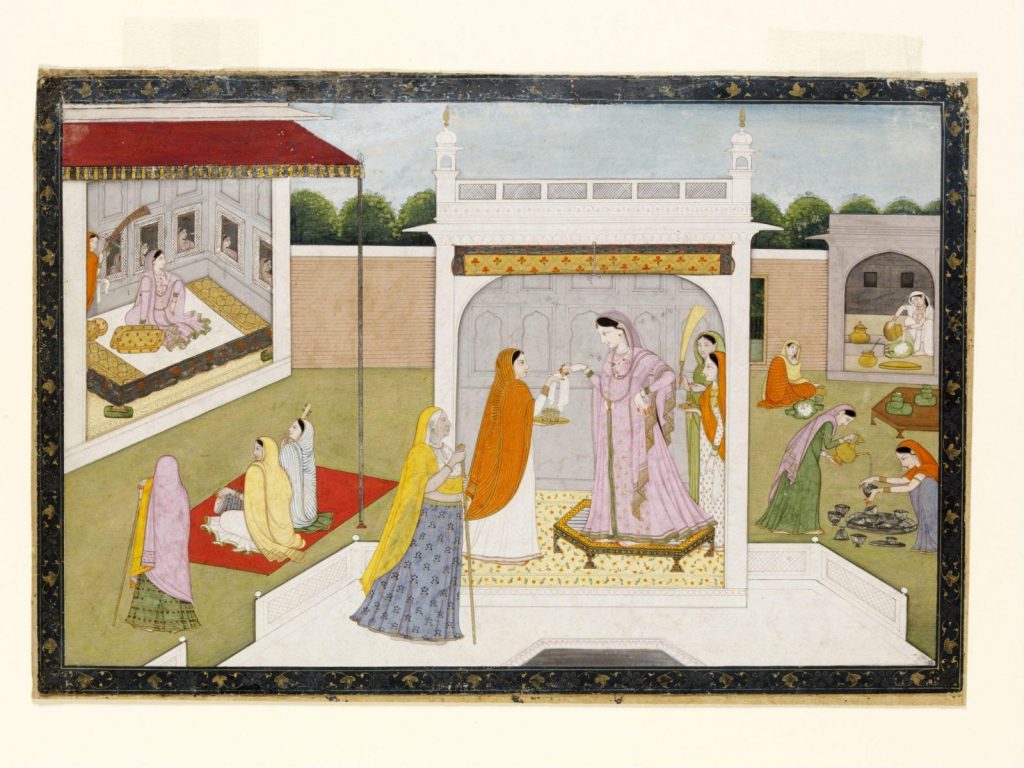WOMEN AS CONNOISSEURS
Rasikās Seen in Early Modern Pahari Painting
Conference at University of Lausanne, October 8th 2024 at 4:15 PM (CET)
The figure of the connoisseur in early modern South Asia has evolved to signify not just an aesthete with refined tastes but one who was affected by rasa (aesthetic delight), bhāva (mood), and a range of synesthetic pleasures. Supported by a vast corpus of paintings of kings, princes, and nobles engaging with the arts, the rasika (aesthete/connoisseur) has been constructed exclusively as the courtly male elite. However, I argue that there are Pahari paintings from the 18th and 19th centuries that depict the rasikā – the elite woman as connoisseur.
Pahari painting particularly lends itself well to this exploration because of the artists’ interest in incorporating carefully observed details of domestic life into their creations, something rarely seen in contemporaneous paintings from other parts of South Asia. From among such details, most important to my research is the artists’ emphasis and curiosity in depicting non-elite women: performers, servants, attendants, courtesans, and others. How the nuanced hierarchies of women’s spaces were emphasized within painted compositions has not yet been investigated. Therefore, through the close visual analysis of paintings and material culture of the early modern Pahari courts my research establishes women as rasikās and reveals how they innovated new feminine ways of visually representing their cultural refinement and courtly authority.
The conference will be held in a hybrid format. Join the talk online !

Rani with attendants, c. 1790. Kangra, Himachal Pradesh. Opaque watercolor and gold on paper. 19.5 x 29.5 cm. Acc. No. IM.4-1912, V&A, London.